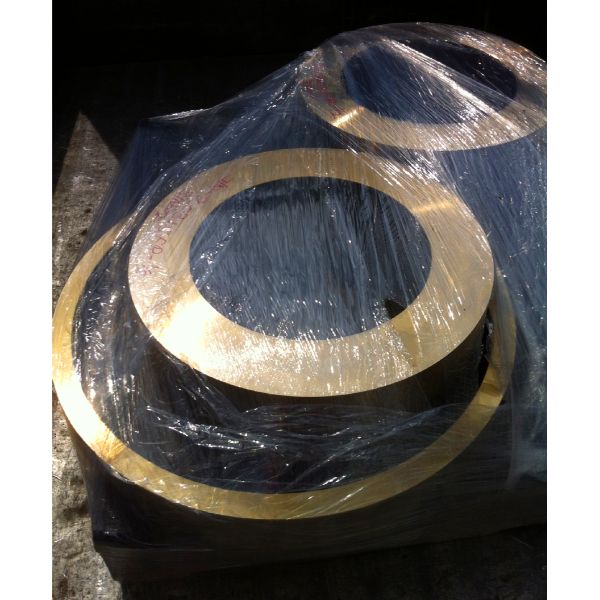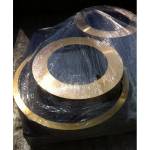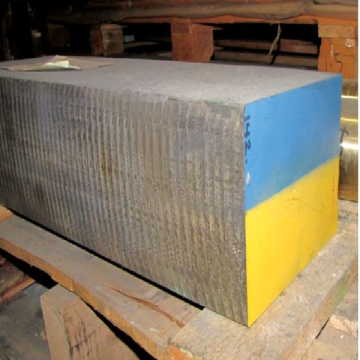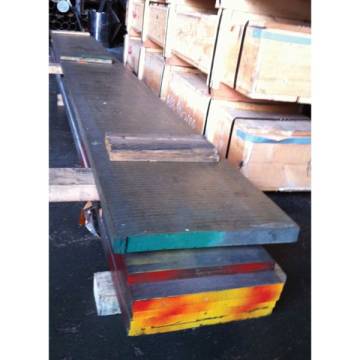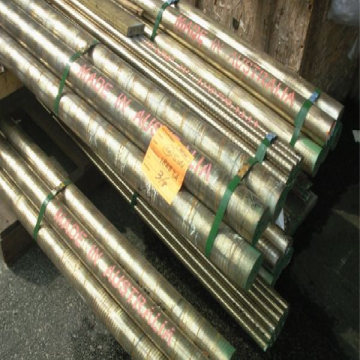Bronze
Tin Bronze
Specifications
- C90710
Summary
- High wear resistance and well known for its corrosion resistance
- Used in gears, shafts, bearings, worm wheels, heavy load bushes, piston rings and valves.
Introduction:
Tin bronze C90710, also known as SAE 65, is a specific type of tin bronze alloy known for its excellent combination of mechanical properties, corrosion resistance, and machinability. Composed primarily of copper (Cu) with tin (Sn) as the primary alloying element, C90710 offers a unique set of characteristics that make it highly valuable in various industrial applications. Here's a detailed write-up on tin bronze C90710:
Composition:
Tin bronze C90710 typically consists of copper as the base metal, with tin added as the primary alloying element. The exact composition of C90710 alloy includes approximately:
- Copper (Cu): 88-92%
- Tin (Sn): 8-10%
- Other trace elements: Phosphorus (P), Zinc (Zn), Lead (Pb), and Iron (Fe) in small amounts.
The precise composition may vary slightly depending on specific manufacturing requirements and standards.
Properties:
- High Strength and Hardness: Tin bronze C90710 exhibits excellent strength and hardness, making it suitable for applications requiring structural integrity and load-bearing capabilities. It can withstand high mechanical stresses and loads without undergoing deformation or failure, providing reliability and longevity in demanding environments.
- Corrosion Resistance: C90710 bronze offers good corrosion resistance, particularly in marine and aqueous environments. The addition of tin enhances the alloy's ability to resist corrosion, forming a protective oxide layer on the surface that prevents further degradation and ensures long-term durability.
- Wear Resistance: Tin bronze C90710 provides exceptional wear resistance, making it suitable for applications subject to abrasive wear and friction. Its ability to maintain dimensional stability and surface integrity under harsh operating conditions contributes to extended service life and reduced maintenance requirements.
- Machinability: C90710 bronze is relatively easy to machine and fabricate using standard machining techniques. Its machinability allows for the production of intricate components with precise dimensions, contributing to manufacturing efficiency and cost-effectiveness.
- Bearing Properties: Tin bronze C90710 is widely used in the manufacture of bearings, bushings, and thrust washers due to its excellent wear resistance and self-lubricating properties. It provides reliable performance and extended service life in rotating and sliding applications.
- Good Electrical Conductivity: Despite the addition of tin, which may slightly reduce electrical conductivity compared to pure copper, C90710 bronze still maintains good electrical conductivity. It is commonly used in electrical and electronic components requiring reliable conductivity, such as connectors, terminals, and switches.
Applications:
- Bearings and Bushings: C90710 bronze is commonly used in the manufacture of bearings, bushings, and thrust washers for various industrial applications, including automotive, aerospace, and machinery. Its excellent wear resistance and self-lubricating properties make it ideal for rotating and sliding applications.
- Marine Engineering: C90710 bronze finds extensive use in marine engineering for components exposed to seawater and corrosive environments, including seawater piping systems, ship propellers, and marine hardware. Its corrosion resistance and mechanical properties contribute to the reliability and longevity of maritime systems.
- Electrical Engineering: C90710 bronze is utilized in electrical and electronic components such as connectors, terminals, switches, and relay contacts due to its good electrical conductivity and corrosion resistance. It ensures reliable electrical performance in various applications.
- Musical Instruments: C90710 bronze is used in the manufacturing of musical instruments, particularly for brass instruments and percussion instruments. Its excellent resonance, durability, and corrosion resistance contribute to the quality of sound produced by the instrument.
- Industrial Machinery: C90710 bronze finds applications in various industrial sectors for components requiring high strength, wear resistance, and corrosion resistance. It is commonly used in gears, valves, fittings, and hydraulic components.
Conclusion:
Tin bronze C90710 is a versatile alloy with a wide range of applications across diverse industries. Its exceptional combination of mechanical properties, corrosion resistance, and machinability makes it indispensable for manufacturing critical components and structures requiring durability, reliability, and performance. Whether in bearings, marine engineering, electrical components, musical instruments, or industrial machinery, C90710 bronze continues to demonstrate its value as a versatile and effective engineering material.
Share

